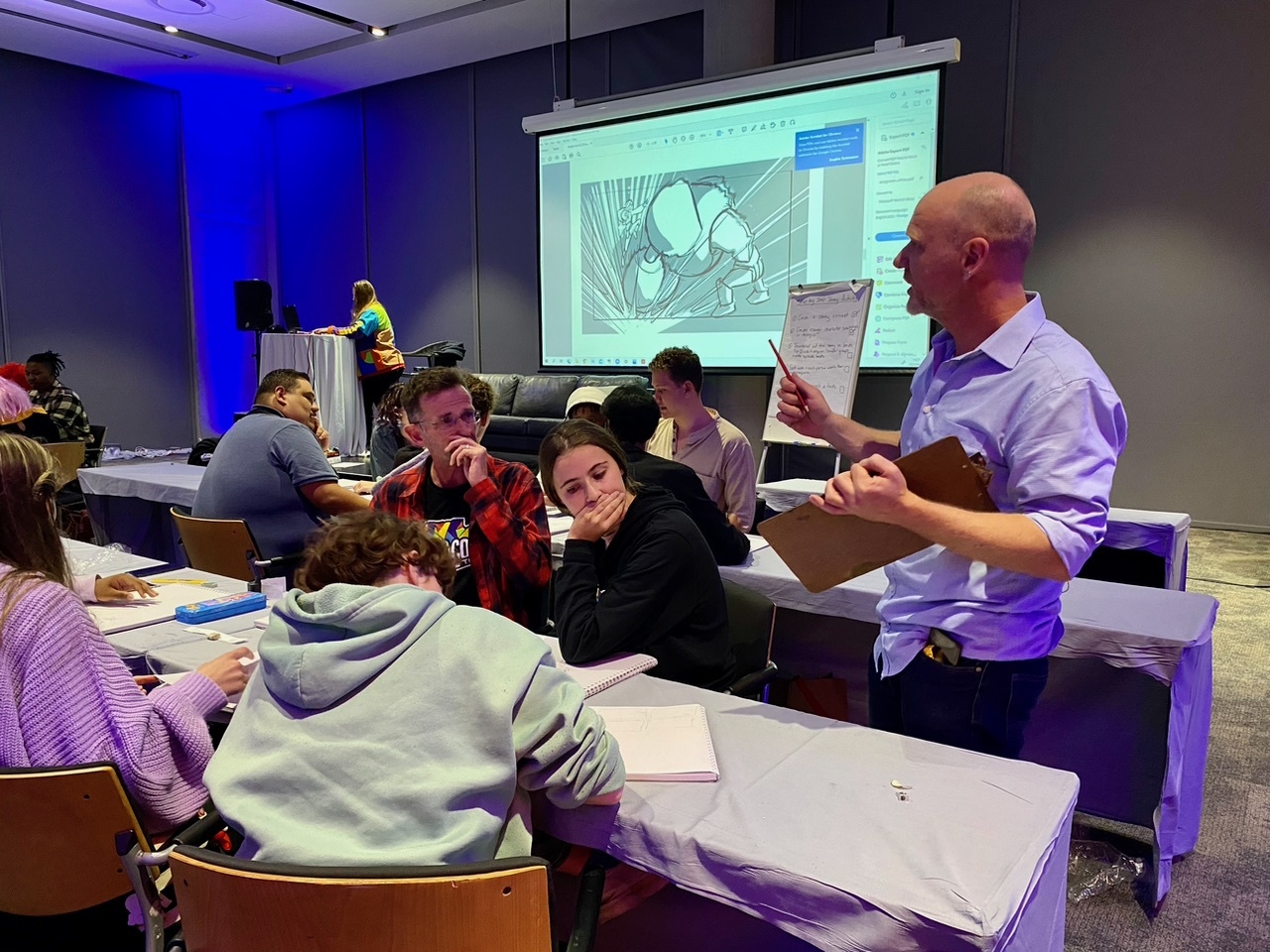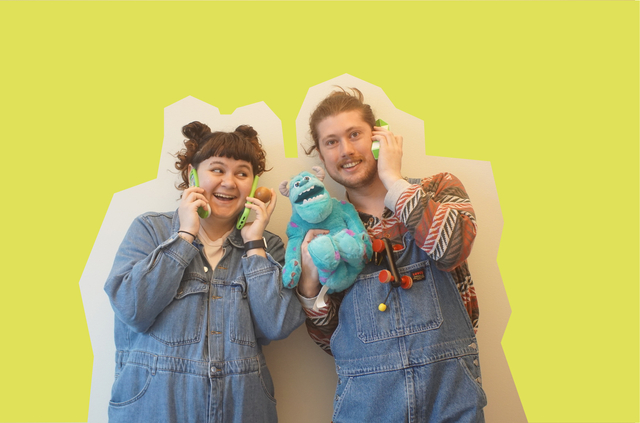The Cape Town International Animation Festival (CTIAF) is Africa’s premier animation festival, showcasing the best in animation from around the world. With a focus on creativity, innovation, and collaboration, CTIAF aims to inspire and connect animation enthusiasts and professionals across the globe. CTIAF’s efforts have focused on encouraging dialogue with international partners to showcase and promote African talent on a global stage. We’ve also created more opportunities for pitching, mentorship, and market access.
Both THU and CTIAF are driven by the same vision: to shine a spotlight on talent, garner more opportunities and knowledge sharing within the creative industries, and create a platform for genuine connections.
We sat down with Stacey Pearson and Dianne Makings from CTIAF to delve deeper into the current creative landscape and its main challenges, CTIAF’s role, and the need for the global audience to experience the “real Africa” on the screen. Our discussion also focused on current initiatives aimed at creating more opportunities for this community and continuing to support the growth of the creative industries in South Africa and beyond.
What would you say are the main challenges the creative industries and their professionals face in Cape Town, particularly in animation?
The Creative Industry is a huge component of Cape Town’s economy. We’re one of the world's Design capitals, evidenced by our top agencies, which have HQs here, and all the film work that happens here. Unfortunately, Market Access is still a huge barrier to entry when it comes to the larger industry. Very few people know about the talent hub here in South Africa. We’re ready for coproductions and to take our stories to market!
This is such an important aspect! South Africa's legacy needs to be put on the global map. Can you explain your mission and how it has evolved over the past decade to those who don’t know CTIAF?
Initially, our primary goal was to create a platform for local studios, fostering awareness and collaboration within the community. We recognized that many studios were operating in isolation, and we aimed to facilitate greater networking and communication.
Over the past six years, we have diligently worked to establish ourselves as the premier animation festival in Africa. Our efforts have focused on encouraging dialogue with international partners to showcase and promote African talent on a global stage. We’ve also created more opportunities for pitching, mentorship, and market access.
Over a decade, the animation industry in Cape Town has evolved tremendously. From a service industry, it moved into creating original IPs and fully producing them! How has this shift impacted, or is impacting, the African animation industry?
Developing original IP allows African studios to retain ownership of their creations, leading to potential revenue streams from licensing, merchandising, and distribution deals. This financial independence can stimulate further investment in local talent and infrastructure.
Projects like "Kizazi Moto," which have gained international acclaim, prove that African stories have universal appeal. These successes inspire other creators and demonstrate the potential of original African IP on the global stage. Owning their IP allows African creators to experiment with different styles, genres, and themes without external constraints. This creative freedom fosters innovation and diversity within the industry.

How would you describe this creative workforce in Cape Town?
We’re an emerging industry, and that’s reflected in the age of most industry professionals. The workforce is largely under 35, which means there’s a lot of energy and excitement around the industry!
What I love about Cape Town’s creative youth is that they are tech-agnostic and tech-challengers. They love animation - but are as excited by gaming, VR, AR, and other forms of art. I think this is essential in future-proofing their careers. Being a well-rounded creative means you can think creatively about every problem.
However, we currently still lack mentors and stable businesses to nurture talent in a volatile industry. A large part of our industry is made up of freelancers and gig workers.
This sounds absolutely refreshing! What would you say are some of their unique perspectives or aspirations that can potencially challenge current traditional norms or help create new paradigms within the industry?
The global audience hasn’t really experienced “real Africa” on the screen. There are pastiches of Africa - but real Africa is not often seen! Africa is vibrant, current, modern, and thriving. Unfortunately, the media makes it seem like the exact opposite. For the longest time, we’ve been presenting work that we believe is palatable to the international community but does not reflect our actual lived experience. Africa is amazing and fun and beautiful - and our art and stories are finally starting to reflect that. In the near future, we hope our youth starts showing work that is more and more authentic.
What’s next, then? What’s missing in Cape Town's creative industries?
So many of our best talents go overseas for opportunities. Cape Town's creative industries possess immense potential and talent, but there are several areas where further development could enhance the sector:
- Infrastructure and Funding: More robust infrastructure and increased funding opportunities are needed to support the growth and sustainability of creative ventures. This includes accessible studio spaces and financial backing for projects.
- Training and Mentorship: Expanded access to specialized training in creative fields can help nurture emerging talent. Partnerships with international institutions and industry professionals can bring valuable expertise and knowledge to local creatives. Without mentors, how do you envision your career path?
- Global Exposure: Increased opportunities for local creatives to showcase their work on international platforms can help raise the profile of Cape Town's creative industries. Participation in global festivals, exhibitions, and competitions can attract international attention and investment.
- Audience Development: Building a larger and more engaged local audience for creative works can drive demand and support for the industry. Our audiences are still very focused on consuming US and UK-based content.
Right. It’s mostly about bridging existing gaps. Going back to when you mentioned the lack of mentoring opportunities… How is CTIAF addressing this industry's need for mentors and stable businesses?
Our incubator program, Pitch, Persuade, Produce, is designed to empower young creatives by refining their existing pitches. In 2023, we selected ten promising projects poised for international success. With the support of our partners at the US embassy, we facilitated an intensive 12-week training program that equipped participants with the skills to make their pitches truly stand out.
The enthusiasm of our guest speakers for the talent in our country has been remarkable. Notably, Peter Ramsey, inspired by his visit to CTIAF, went on to executive produce "Kizazi Moto," an anthology celebrating African animation.
Thank you for your important insights, Stacey and Dianne!
Indeed, good ideas know no borders, and they deserve to be seen. While there’s a long way to go, initiatives such as Pitch, Persuade, Produce, and THU Talent League are incredibly relevant to helping local creators succeed and catapult their projects.
Want to learn more about the Talent League? This initiative is a worldwide talent and ideas accelerator that offers a unique platform for creatives to compete on a regional level while benefiting from world-class mentorships! This ensures that local talents showcase their skills on a global stage without the initial pressure of competing against a vast international pool, which levels the playing field for African teams.
Submit your idea by August 15.
.jpeg)



